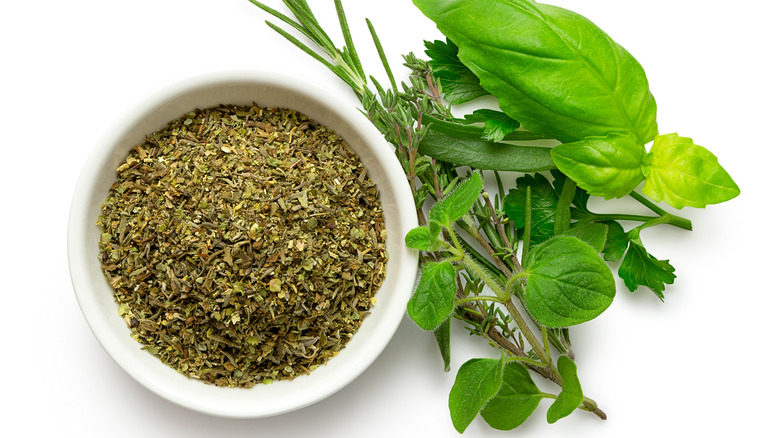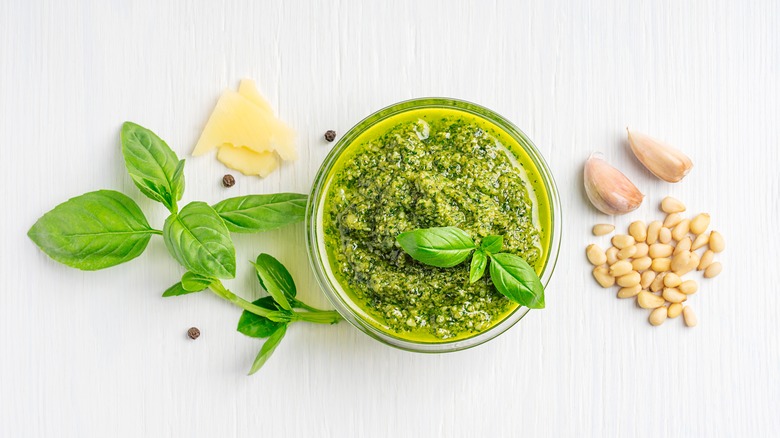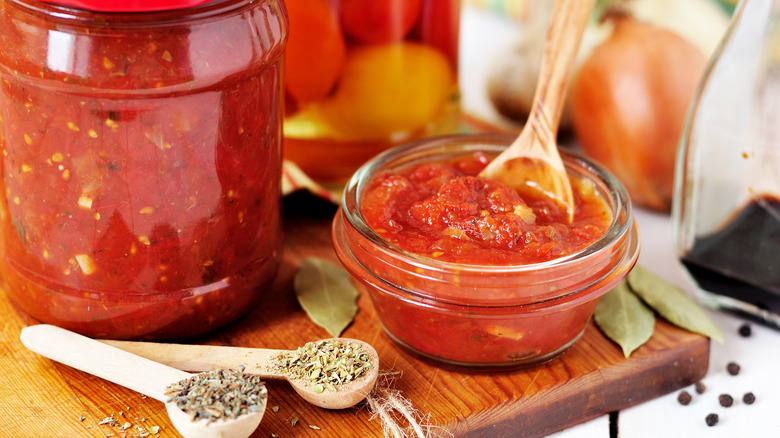When To Use Fresh Herbs Over Dry Herbs
Whether a sprinkling of chopped parsley as a garnish, a woody, rosemary-infused pot roast, or a dollop of fresh basil pesto atop a bed of pasta, herbs have the power to transform any dish. As a final, finishing touch, or the main star of the show, herbs can be what takes a dish from good to great.
While fresh, leafy herbs may conjure up images of summer gardens, and their dried versions elicit memories of winter stews, most dried versions taste very similar to their fresh counterparts, and herbs in both of their forms can be used year-round.
Many people tend to assume fresh herbs are superior and only reach for the bottle of the dried version when their refrigerator crisper drawer is empty. While the two iterations serve their purpose in cooking and, ultimately, play a major role in the outcome of the final dish, there is a time and a purpose for each. When it comes down to when to use fresh over dried herbs and vice versa, there are a few factors at play, though it's mostly dependent on the timing and type.
End with fresh herbs
Fresh herbs are leafy, delicate, and tender. They're picked at their peak of ripeness and can add a splash of color, aroma, brightness, and texture to any dish. When to use fresh herbs can be pretty straightforward, like in a raw dish or an herb-heavy recipe. After all, what would guacamole be without fresh cilantro, or a mojito without muddled mint? Still, there are a few general rules of thumb to keep in mind.
A Couple Cooks points out that fresh herbs can be divided into two groups — tender and hard, with the defining distinction being the stem. Hard herbs have a thicker stem, much like a small branch of a tree, whereas tender herbs have a flexible, supple green stem.
When it comes to cooking, hard herbs can withstand a bit more cooking time and heat, while tender herbs are best added at the end of the cooking process, per Vegetables.co.nz – think chopped chives sprinkled on a bagel with lox versus a thyme-steeped mushroom ragu.
Start with dry herbs
Dried herbs are just fresh herbs with the water content removed through a dehydration process. Just like dried fruit, drying concentrates the flavor of the herb, helping lead to a more potent punch on the palate.
It may come as no surprise to learn that the hard, woody-stemmed herbs are better suited for being dried. Per America's Test kitchen, tender, delicate fresh herbs lose their flavor and may take on a musty quality when dried.
Dried herbs are best added at the beginning of cooking the dish so they have time to reconstitute with the liquid. They add a deeper flavor to the dish and are perfect for infusing soups and stews, incorporated into dry rubs and blends, and as a base note for sauces — think a simmering marinara sauce with dried oregano or an Herbes de Provence rubbed roast chicken.
Bottom line, per slofoodgroup, the daintier fresh herbs are best to add toward the end of cooking, while heartier dried herbs are best added toward the beginning of dishes that cook for a longer period of time.


